Bladderwrack Tuesday, 25th November 2003
This Bladderwrack, Fucus vesiculosus which I picked up on the beach at Scarborough a week or so ago, has been in a bucket of water, tap water, waiting for me to get around to drawing it. I did change the water once because it was getting cloudy.
I was considering of adding a colour wash to my
drawing but I wanted to do this as a brush pen drawing so - to
give you an idea of the colour - I put the seaweed itself on the
glass of my scanner, with a sheet of paper over it to protect
the lid of the scanner. I made sure that I wiped the glass straight
after doing the scan as I'd noticed that the moist seaweed had
left the paper (left) I'd rested it on as I drew it.
Bladders and MidribsScanning has the advantage that I've been able to adjust the contrast so that the bladderack doesn't appear to be such a dark olive green or brown - almost blackish - and you can see its structure more easily.
The fronds have a prominent midrib. HabitatFound on the midshore and
in estuaries. In sheltered situations it can grow with its holdfast
attached to small pebbles.
Related LinksAlgaebase a database of terrestrial, marine and freshwater algae including seaweeds. Medicinal uses of bladderwrack from A Modern Herbal, first published in 1931, by Mrs. M. Grieve at www.botanical.com
|
|||||||||||||||||||||||||||

 Previous Page
Previous Page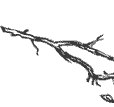

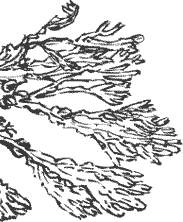


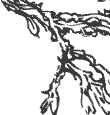
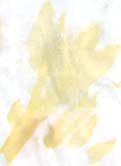 The
pattern of branching - always dividing into two - is growth pattern
found not just in seaweeds but in a number of the more primitive
groups of plants, such as clubmosses.
The
pattern of branching - always dividing into two - is growth pattern
found not just in seaweeds but in a number of the more primitive
groups of plants, such as clubmosses.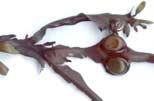
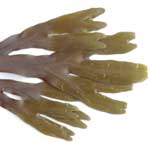




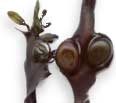
 The
bladders (left), which give the seaweed
its alternative name of popweed, give the seaweed
bouyancy.
The
bladders (left), which give the seaweed
its alternative name of popweed, give the seaweed
bouyancy.